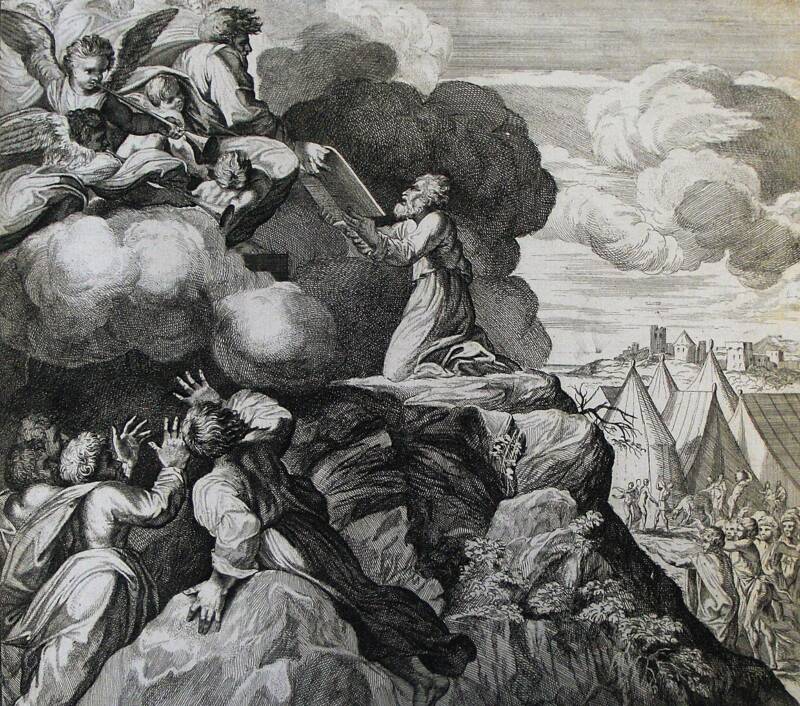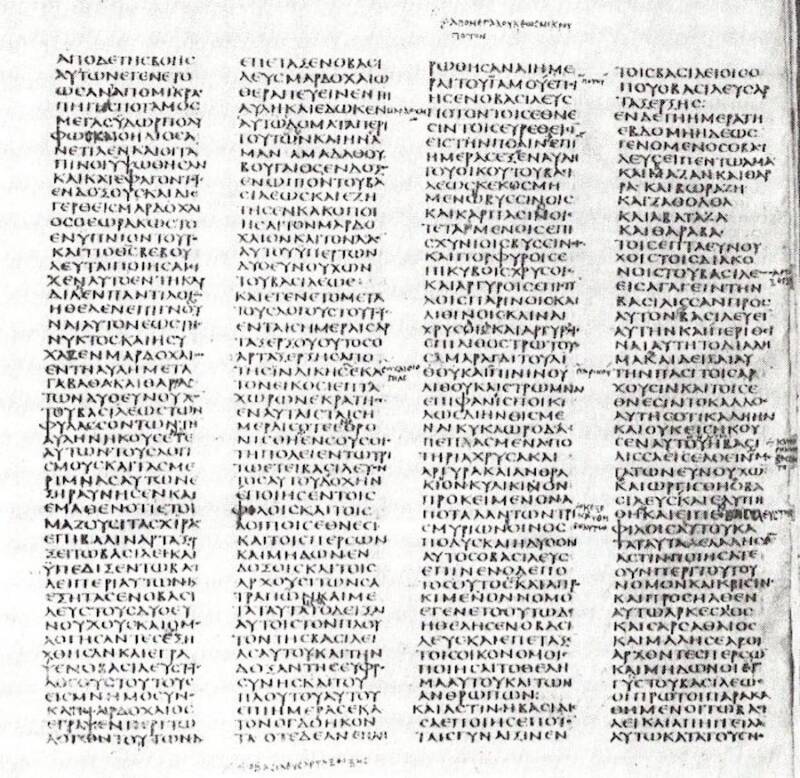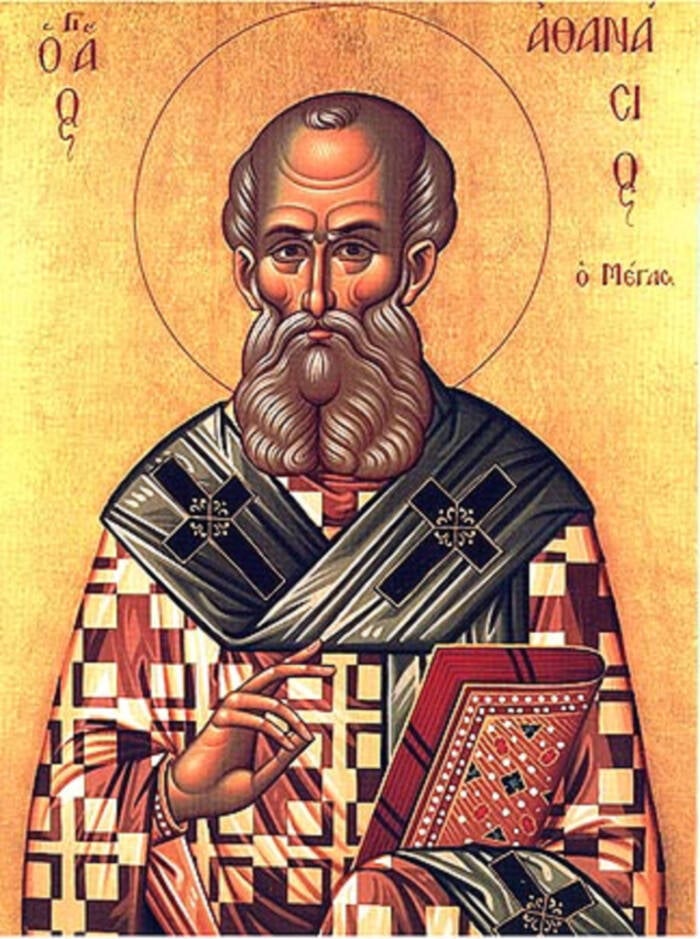Go inside the complicated history of when the Bible was written and the ongoing debates about the authorship of the Christian holy book.
It’s hard to imagine a more influential book than the Bible. When its ancient Old Testament and not-quite-as-ancient New Testament are taken into account, the Bible has been a part of the human experience for thousands of years. But for something that has guided countless societies and individuals on nearly every continent on Earth during that time, one question is surprisingly difficult to answer: When was the Bible written?
The Bible is a compilation of writings — an anthology — rather than a single narrative. That’s why the question has more than one answer. Some might be curious about when the Bible’s earliest verses were written. Others might wonder when the Tanakh, or the Hebrew Bible, was completed for people who follow Judaism. And others might want to know when the New Testament was compiled to help create the holy book of Christianity.
The authorship of many Biblical books has been lost to time, while others have been carefully noted. Yet others have undergone reappraisal as theologians, historians, and archaeologists uncover new evidence and reexamine old traditions. Here’s a look at the complex — and lengthy — history of how one of humanity’s most impactful texts came to be.
When Was The Bible’s Old Testament Written?

Wikimedia CommonsThe Hebrew prophet Moses receiving the Ten Commandments from God.
It’s believed that the first parts of the Hebrew Bible were written as far back as the 10th century B.C.E. But even if the holy book is not quite that old, many experts say the Bible’s earliest verses date back well over 2,000 years.
Some of the earliest-written passages in the Bible’s Old Testament are thought to be Exodus 15 (“The Song of the Sea”), Deuteronomy 32 (“The Song of Moses”), and Judges 5 (“The Song of Deborah”).
Traditionally, Moses was considered the author of the Pentateuch, the first five books of the Hebrew Bible and the Christian Old Testament. He was thought to have lived between the 14th and 13th centuries B.C.E., which would make those first five books astoundingly old if he was the author.
However, many Biblical scholars now doubt that Moses really wrote all five of those books, especially since one book, Deuteronomy, tells the story of Moses’ death. Additionally, the earliest passages in the five books are written in a distinctly older style than other portions of the Pentateuch.

Wikimedia CommonsKetef Hinnom, near Jerusalem, where the oldest fragment of the Book of Numbers was discovered in 1979.
Some religious leaders have suggested that Moses could have borrowed from pre-scriptural oral tradition and incorporated that into his writing. But others have claimed that authors who came after Moses actually wrote the books, based on Moses’ notes. One name suggested in the past was Ezra the Scribe, who lived around 450 B.C.E., though most modern rabbis believe Ezra simply made changes to the existing text rather than creating it himself.
But since there is little hard evidence of when the earliest parts of the Bible were written, many scholars turn to the archaeological record to look for clues. According to the Bible Archaeology Report, the Silver Ketef Hinnom Scrolls are some of the best examples. These pieces of ancient Biblical text, which contain a blessing from the Book of Numbers, are believed to date to the 7th century B.C.E. Meanwhile, the Dead Sea Scrolls, which contain fragments of Leviticus, are thought to be over 2,000 years old.
Regardless of who wrote the texts that became the Bible, and however they did it, the evidence suggests that the process began far into the past, perhaps before the destruction of Judah — and very long before the birth of Jesus Christ himself. The entire Hebrew Bible was completed by about 100 C.E., meaning it took several centuries to finish the compilation.
The biggest challenge with determining just when the Old Testament came to be is that most of the evidence is buried deep in the ancient past. The New Testament, on the other hand, is somewhat easier to unpack.
When Was The Bible’s New Testament Written?

Wikimedia CommonsPaul the Apostle’s epistles are among the earliest elements of the New Testament.
The books of the Bible’s New Testament were written from the 1st century C.E. to the 2nd century C.E. It’s believed they took a period of about 50 years total to complete — a far shorter timeframe than the Old Testament.
The earliest portions of the New Testament — and some of the earliest Christian literature in existence — are the Pauline epistles. These letters are traditionally attributed to Paul the Apostle, who wrote (at least some of) them around 50 C.E. There are also general epistles, including the Letter to the Hebrews, which was once thought to be authored by Paul the Apostle but is now believed to be the work of another writer, perhaps St. Barnabas.
Interestingly enough, it was once widely believed that Paul the Apostle wrote a whopping 13 of the 27 books of the New Testament, but today, Biblical scholars only agree on the authenticity of seven of his writings.
Then, there are the most significant portions of the Bible’s New Testament: the Gospels, written by the Four Evangelists: Matthew, Mark, Luke, and John. Modern scholars believe the Gospel of Mark was the first of these, written around 70 C.E., with Matthew and Luke drawing heavily from Mark’s work. The Gospel of John was probably completed around 90 C.E. or 100 C.E.

Wikimedia CommonsThe evangelists Matthew, Mark, Luke, and John wrote the four Gospels, similar but distinct narratives about Jesus.
But while this may seem far more clear-cut than the authorship of the Old Testament, some mysteries still remain about the New Testament. According to PBS, one thing complicating matters is the Q source, a hypothetical Gospel that may have included additional teachings and sayings of Jesus.
While no actual manuscript of Q has ever been discovered, scholars believe that it existed at one time because of the striking similarities in material shared between Matthew and Luke, which are absent in Mark’s Gospel. This suggests a common written source for their shared material.
Finally, there’s the Book of Revelation. It was originally thought that John the Apostle was responsible for writing it. But now, it’s believed to have been written by a mysterious “John of Patmos” around 95 C.E. At first rejected or questioned for its apocalyptic content, Revelation was eventually accepted by early theologians as a logical way to end the New Testament.
Building The Christian Holy Book

Wikimedia CommonsThe Codex Sinaiticus, the oldest known manuscript of the Christian Bible, assembled in the 4th century C.E.
Because the Bible’s books came from so many different sources, both the Old and New Testaments had to be compiled out of existing material. As John Barton, a former Oxford professor and the author of A History of the Bible: The Books and Its Faiths, put it: “The [Old Testament] is a work of early Judaism. It should be remembered that for a long time it was a collection of individual scrolls, not a single book between two covers.”
The Hebrew Bible, or Tanakh, was written and compiled over the course of several centuries. Three main sections — the Torah (Teaching), the Neviʾim (Prophets), and Ketuvim (Writings) — were collected from ancient scriptures dating as far back as the 10th century B.C.E. It was believed to have been fully completed around 100 C.E. Naturally, the canonization process was influenced by religious, political, and cultural factors of the time.
The earliest Christians looked to the Old Testament as a foundational scripture, supplementing it with writings comprising letters, Gospels, and other accounts documenting the life of Jesus Christ and the early Christian movement. But since the early Christian church was scattered over huge swaths of territory and included dozens of competing ideas, deciding which books should be included in the New Testament took a long time.
A number of councils, religious leaders, and clergy members weighed in over the years, deciding what would be included and what order the books would appear in. The entire Christian Bible as a whole would not be completed until the late 4th century. The Codex Sinaiticus, compiled during that time, is believed to be the oldest manuscript of the Christian Bible.

Wikimedia CommonsAthanasius of Alexandria recorded one of the earliest complete lists of the New Testament canon.
It’s unknown exactly when the accepted list of Biblical books was settled. But religious leader Athanasius of Alexandria compiled the earliest known complete list of the New Testament canon around 367 C.E. However, some argue that there may have been a complete list that came before his.
It’s unlikely that Athanasius developed his canon on his own. Since he was just one religious leader among many, it’s thought that his list reflected a long process of selection, the finalization of which has been lost to history. However it came to be, the New Testament had more or less reached its final and current form some 1,600 years ago. But of course, many different versions of the book have been published since then (popular modern versions include the King James Version and the New International Version).
So when was the Bible written? You could say it started with oral traditions or Hebrew inscriptions on ancient artifacts. Or you could point to its approximate date of completion by early religious leaders.
Perhaps a better way to look at it is to see the Bible as the result of an incredibly long multigenerational process, with succeeding waves of scholars and spiritual leaders selecting, compiling, and adapting pieces to suit their beliefs and needs. So while we can say that the Christian Bible as a whole was finished in the late 4th century C.E., you could also say that the Bible has been written throughout history, evolving with time.
After learning about when the Bible was written, read about the crucifixion of Jesus Christ. Then, take a look at the fascinating similarities between the Bible and the Quran.






